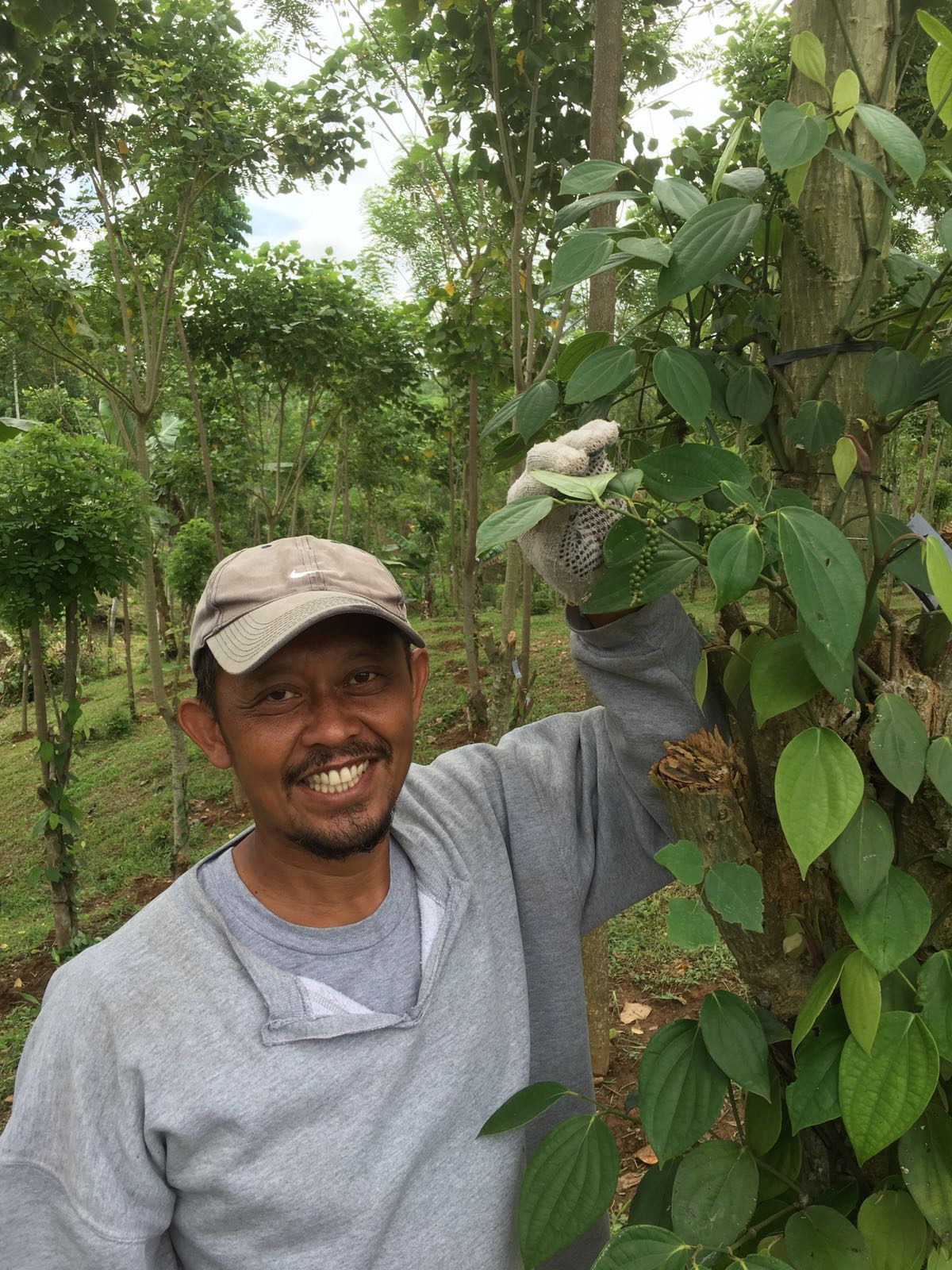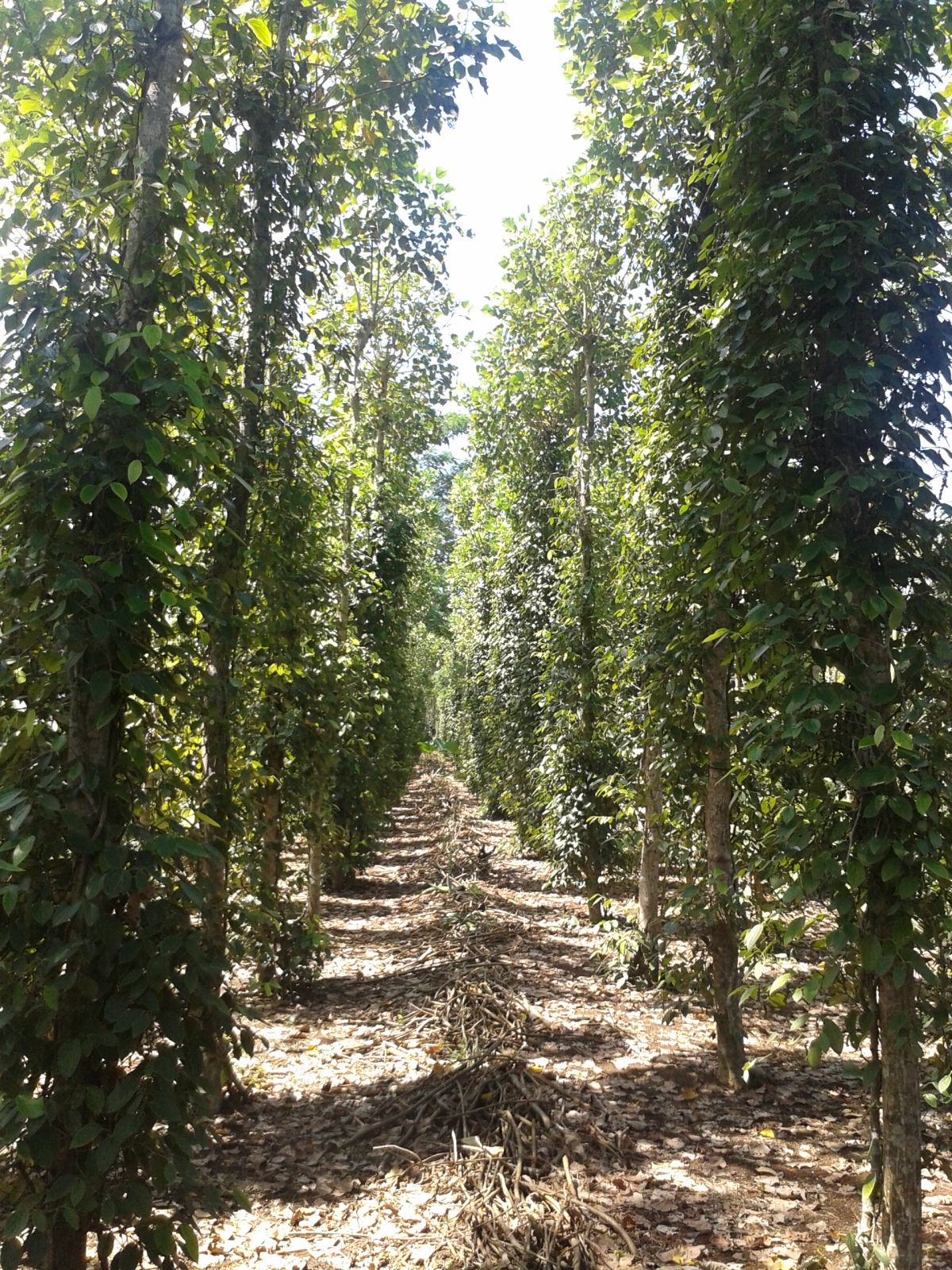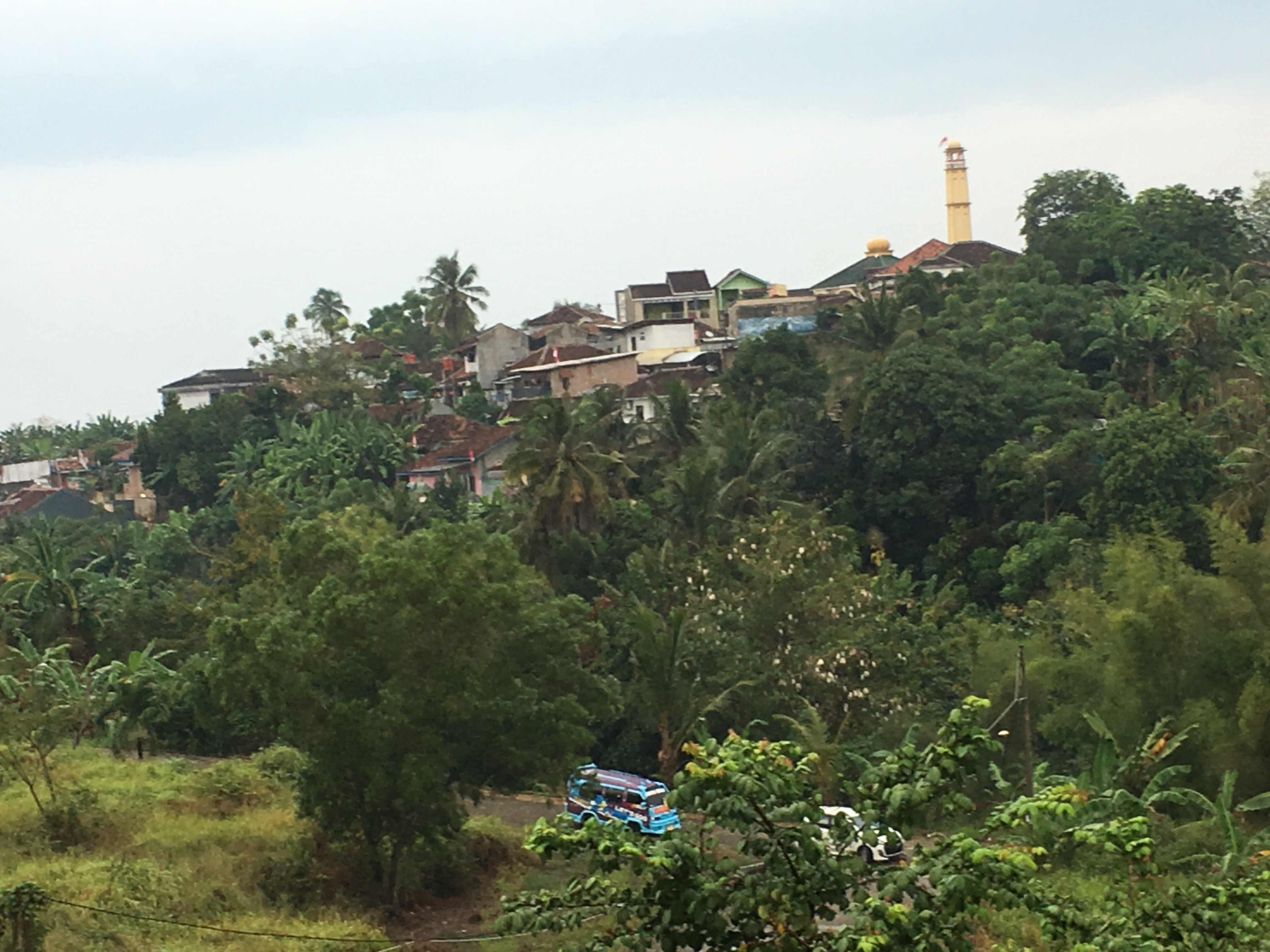Pepper from Indonesia
Indonesia is the historical area where Pepper is grown and traded. Already before the colonial period, it became a high value commodity in the 15th century, when first pepper plantations had been planted. Ambitious colonial master, fruitful soil, thousands of peasants, and smart traders made pepper to one of the most traditional commodity of Indonesia. 2013 Indonesia was the second largest black Pepper provider esp. for Lampung Pepper; today it takes the fourth position behind Vietnam, India and Brazil. With regard to white Pepper, Indonesia takes place three, behind China and Vietnam. Find out more about the reasons here:
Lampung Pepper
Lampung pepper is known all over the world because of its burning pungency, taste and aroma. They are small, tasting fruitful and sharp on the tip of the tongue. The dark shining matt kernels are very pretty in a pepper mill.
Lampung black pepper has gotten the name during Dutch colonial time. Therefore, the name is spelled with a „o“instead of the new used spelling with “u”. It is recognized by its cultivation area: Lampung, located at the southern part of Sumatra. The region produce around 35.000 tons in 2017, exporting 20.700 thereof
Nearly 29.000 Pepper Farmers are in Lampung. Smallholders with plots of lands that ranges from 0,2 – 1,5 ha . In the average they are not large as a football pitch. Farmer’s cooperatives own together a bigger plot of land of up to 10 hectares.
In addition to Pepper, rubber, cassava or palm-oil is harvested. Pepper is seen as an intermediate crop and additional revenue to coffee (Northern Lampung) or cassava/tapioka (Eastern Lampung
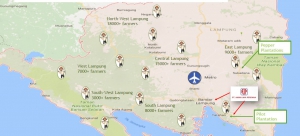
Lampung: Planting Areas, Quelle: SST
A pepper tree is called a pepper vine. The vine climbs up a live or dead standard. Farmers in Lampung use live standards (living trees). There are about 1.500-2.000 vines in a hectare of land. The yield is about 2-3 of fresh berries or 0,4-0,5 kg of dry pepper per vine/year. The output is about 600 – 1000 kg of dry berries per hectare. It takes about 3 years, before first harvest can take place. The Maximum yield is reached in year seven . Pepper vines in Lampung have about 20 years‘lifetime, however there are pepper vines in Lampung that are much older.

Pepper Vine with pepper in Lampung/Source SST
Black pepper is manually picked from the trees when berries are fully developed (6-7 months after flowering) having a dark green color and very solid content. Every vine has a gross output of about 2-3 kg fresh pepper.
To get the uniformly dark color, some farmers stack the berries in a gunny or plastic bag for a few days (2-4 days). The berries are separated from spikes by hand or food, then immediately spread out on plastic or bamboo mats and sun-dried for five to seven days, depending on the climatic condition. To protect from theft, farmers store pepper in their house during night.
When berries are fully dried and have turned black, they are again stored inside the farmer’s house, until he is ready to sell them. The time lag can be a few days or – according to price expectations – some months.
Smale-scale agricultural units often operate on various levels, i.e. the small farmers sells to small collecting merchants (90%) who sells to large collecting meracts. Then the large collecting merchant sells to the large processor/exporter. Some cooperatives sell directly to processors.
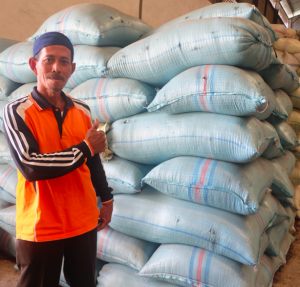
Lampung Pepper Farmer in front of his bags/Source:SST
After some processors withdrawed from Muntok, they have now established new and huge pepper production units in Lampung. Processors are big names as Aman Jaya/SST, CV Panem Baru or PT Putra Bali with tremendous financial strength. They maintain their warehouses, storing farmers goods before the orders from abroad come in. Only then goods are released and paid and will be produced in the big processing units (re-cleaned, steam-washed, filled in nags)
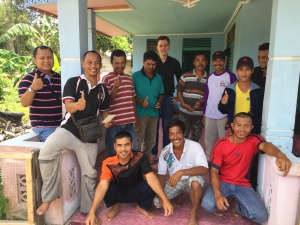
Farmers of a Pepper Cooperative/Quelle: SST
Prospects
During the last years in Lampung many new plantings and some new very modern factories were built.
There is certainly a significant decrease in production in the year 2017.
Decreasing market prices and comparatively low productivity in terms of yield per hectare are the main problems in Indonesia. Farmers achieve an average output of 500 kg/hectare, whereas Vietnam is at 32, mt/hectare and Brazil at 2,3 mt/hectare. Low productivity logically leads to comparatively high prices and this might be the biggest issue for Indonesian pepper.
Besides this, global warming is another issue: in Indonesia temperatures are increasing, there are already some draughts and weather-related harvest shortages.
Therefore Lampung pepper producer are now concentrating on the worldwide megatrend sustainability as the likely major growth segment of tomorrow. “There are projects ongoing to educate farmers in the use of fertilizers, pesticides and crop management to ensure Lampung black pepper will be there for the future.” Danny van Hattem, market manager with PT. Aman Jaya Perdana/SST concludes.
At this point, is become our thanks to Danny van Hattem for his helpful support during our research work in Indonesia.
All data given are according to our todays knowledge or opinion. They are without obligation.

